With leguanitos to healthy children’s feet
When children start walking, the first children's shoes, also known as first-walker shoes, are a good idea. However, there are a few things to consider, because not all first-walker shoes are the same: quality and fit are the most important things. Children's shoes should be flexible and adapt to the foot, not the other way around.
The younger the child, the softer their bones are, including the bones in their feet. It takes many years for a child's bone structure to fully develop. Before that, children's feet are flexible and malleable. That's why it's important to make sure they wear the right shoes. They should also be flexible and malleable . Shoes that are too small, too big, or too tight have a negative effect on the development of healthy children's feet. Shoes that are too small can cause the feet to become misaligned. If the shoes are too big, the feet "float" and the child's toes cramp up in an attempt to find support. In order to find the right first walker shoes, it's important to pay attention to a few criteria when buying.
At what age should children start wearing shoes?
The common and accepted opinion in expert circles is that barefoot is the best way to walk - especially for "beginners". This means that babies' feet have 100 percent contact with the ground and therefore have better grip. Anti-slip socks can be worn to start with and indoors. In these, the child's foot still has enough freedom of movement.
But what do you do when you go outside? Until a child can walk freely on its own, it doesn't need shoes. A shoe doesn't help the baby to stand or walk, it's just meant to protect the child's foot from external factors such as cold, wetness or injuries. The foot doesn't need support. That's why the ideal children's shoe adapts to the movement of the foot. The right first-step shoes meet this criterion. The first-step shoes from leguano, the leguanitos, can be worn as socks as soon as the feet are big enough from around 10 months .
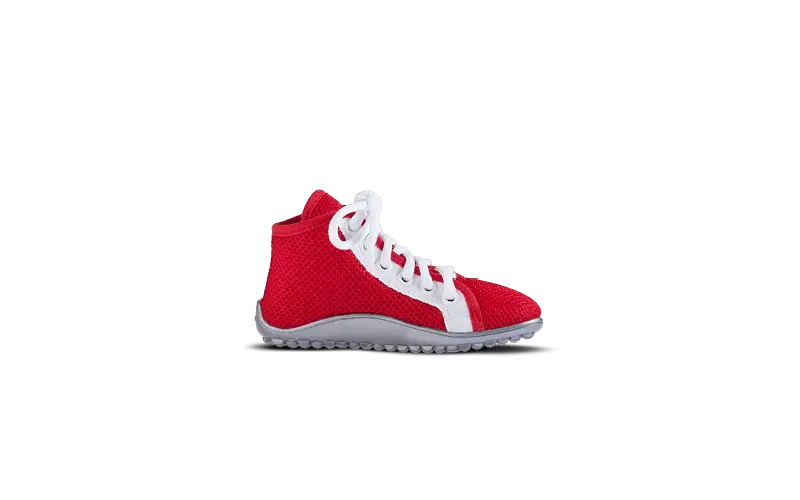
Healthy feet right from the start
From the first attempt at walking, leguanitos are suitable for every adventure, whether indoors or outdoors. Start walking and discovering now!
These 5 points make a good children's shoe
1. A flexible and soft sole:
The most important thing in a good children's shoe is a flexible and soft sole. It should be possible to bend it with one hand without much effort. This is the only way a child learns to roll their foot. A beginner walker usually puts their foot down with the entire sole of their foot or moves on the ball of their foot. Heavy shoes with rigid soles are a hindrance: the receptors in the foot no longer feel the ground. In contrast to these firm, "conventional" shoes, a flexible sole allows contact with the ground .
2. A flat sole:
It is best if the shoe has a zero heel , so that the foot stands as naturally as possible in the shoe.
3. Flexible upper material:
In addition to a good sole, the upper material should also be flexible. Soft materials are particularly suitable for this. The foot and toes are not constricted. This allows the foot freedom of movement in all directions.
4. Breathable materials:
The materials should be breathable and able to absorb and wick away sweat well. Breathable material also protects against skin infections and athlete's foot.
5. No supportive pads or insoles:
There should be no special insoles or supportive pads in the shoe. Only then can the foot develop freely and build up good foot muscles.
The perfect fit is the be-all and end-all, which is why shoes need to be changed frequently, especially at a young age, because children's feet grow quickly.

How often should children’s feet be measured and children’s shoes checked?
Small children cannot feel whether a shoe is too small or too big. The brain does not yet know that the shoe is too tight. The nervous system is still developing in this regard. This can be seen, for example, in the fact that the child does not notice when it puts on the shoes the wrong way round. Children can walk for weeks in shoes that are too small without being particularly bothered by it.
Regular checks are therefore extremely important: Have the child's feet grown? The child's age plays a major role:
- between the ages of one and three, the shoes should be checked every three months to see if they still fit.
- between the ages of three and six, checks three times a year are sufficient,
- Between the ages of six and ten, children should be checked every five months.
Interesting facts: Over 50% of all children wear shoes that are too short (Children's Shoe Research Group 2014). For the study "The German Children's Foot Report" (German Shoe Institute, 2009), over 20,000 children's feet were scientifically measured in collaboration with the University of Potsdam. The result is alarming: Most children wear shoes that are too small or too big, which can lead to foot damage and subsequent illnesses (e.g. flat feet, later headaches, arthritis or spinal damage).
Space in the shoe is important
Feet need space. If the feet are constricted, this leads to an unnatural toe position, with the big toes usually crooked. In addition, natural walking is prevented because the movement patterns change. This can lead to knee and hip joint damage later on. Misalignment of the back can also be the result. The toe space should definitely be wide and high enough or made of a flexible upper material so that the toes are not squashed. Neither from above nor from the side.
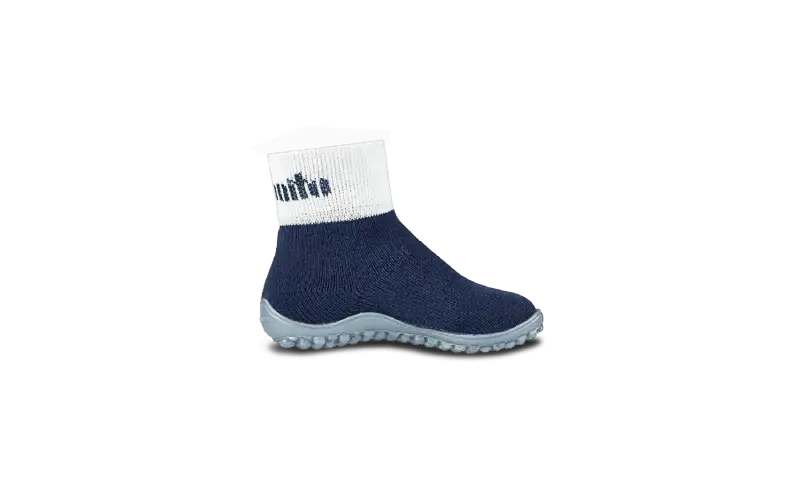
Learning to walk with first walker shoes
The children's barefoot shoes offer protection without restricting the little feet's freedom of movement.
Buy first walker shoes – but not without a child
Before you go shoe shopping, you should make a template of the feet out of cardboard and add one centimeter to the length. It is important that the child's foot is completely relaxed. Babies often pull in their toes, which can cause problems if you only measure them in the shoe shop. The cut-out template must fit completely into the shoe without any problems. To be on the safe side and avoid buying shoes that are too small, you should add about one centimeter to the foot length. The child should still be taken shoe shopping and try the shoes on. Even though this can be tiring, having feet measured and possibly trying on x number of shoes is not fun for many children.
In most shoe stores, children's feet are measured using the width measurement system (WMS). This is a standardized system that has been in use since 1974 and measures not only the length but also the width of the child's foot. This ensures that the foot fits as well as possible in the shoe. Measurements are taken while standing because the feet are only optimally loaded when standing. The same applies to trying on shoes. Tip: If the child walks through the store in socks for a short time before being measured, the feet will relax. This allows for better or more accurate measurements. The best time to buy shoes is in the afternoon . Feet swell over the course of the day. In children, the difference to the "normal state" can then be a few millimeters more. If you go shoe shopping in the afternoon, you reduce the chance of buying shoes that are too small.
Nevertheless, the more a child walks barefoot, the better it is for the development of the feet and the entire musculoskeletal system. This is the best way to strengthen the foot muscles and train balance . leguanitos support and protect little feet from the very beginning. Their construction makes them extremely similar to walking barefoot. These barefoot shoes for children are also characterized by their high flexibility and durability . They are extremely hard-wearing thanks to the patented KUNERT yarn (TWISTED FIBER by KUNERT). The climate-regulating fiber ensures a dry feel as it has 50% higher moisture absorption than cotton. The LIFOLIT® sole is also non-slip, flexible and very durable.
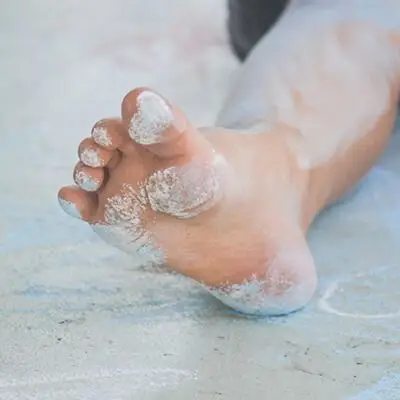
Foot deformities in children
Very few children are born with a foot deformity. These usually develop over the years, for example by wearing shoes that don't fit properly.
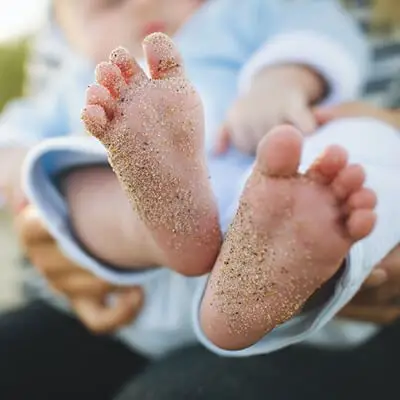
Development of baby and children's feet
The younger the child, the more sensitive the foot. A healthy and strong arch develops best when the feet can move freely barefoot.
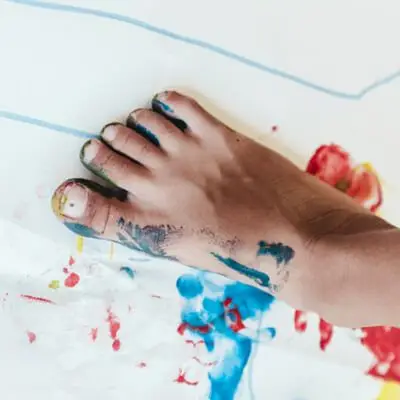
10 exercises for healthy children’s feet
The foot muscles can be trained from a young age. This not only strengthens the knees, hips and back, but also improves coordination and fine motor skills.